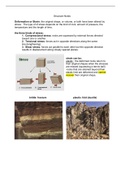Other
TEFL Academy - Assignment B (Lesson Plan Form and Paragraph)
- Course
- Institution
Lesson Plan Form and Paragraph. Includes Warmer Stage, Presentation Stage, Freer practice activities, Controlled practice activities, Paragraph for the reason of choosing the specific activities. To introduce the first conditional for the function of talking about events that may happen in th...
[Show more]






